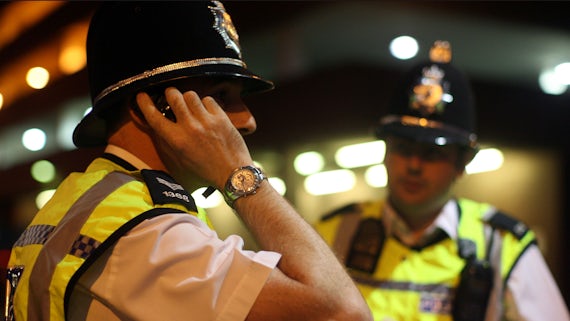Simon Moore

Violence is costly. A burden on the NHS, police and ambulance services, it inflicts immeasurable misery on its victims.
I am part of the University's Violence Research Group, which seeks to understand the origins of violence to build a better society. One of our latest projects brings together University computer scientists, Airbus Group technologists and Welsh Government to develop cameras that detect violence on the streets.
Smarter ways of detecting crime can help police and councils target resources. The costs of staffing and maintaining a CCTV operation are considerable, and in some cases cameras are being switched off altogether.
Our early work found CCTV can reduce assault-related injury. Once cameras are in place, police-recorded crime tends to increase (more violence is observed), but assault-related injuries recorded at hospital A&Es goes down. One likely reason is that CCTV allows police to respond earlier and stop events escalating.

"Smarter ways of detecting crime can help police and councils target resources."
Co-Director of the Security, Crime and Intelligence Innovation Institute
Director of Violence Research Group
Work with the School of Computer Science on reducing alcohol-related violence produced evidence that existing CCTV infrastructure might play a pivotal role in cutting violence. In later talks with Airbus Group we realised there were opportunities to move into other areas like national security.
While we had early success improving our understanding of crowding and crowd movement in night time environments, we hit some significant barriers. One early snag was technical, but VHS tapes have given way to HD digital cameras, making our research easier. The night time environment - with its darkness, huddled groups, buses and cars - was a bigger hitch. While there is plenty of global research tracking individual movements in simulated environments, we were quickly realising why no one was looking at 'real world' CCTV footage.
Luckily, funding allowed us to recruit students through the International Association for the Exchange of Students for Technical Experience. Gaining experience working in the UK, they helped us work on the problems we were facing. We kept talking, keeping Airbus in the loop, and then a couple of important events occurred.
First, Professor Dave Marshall's work with the Welsh Rugby Union gave important insight into our CCTV problem. He was interested in automatically identifying phases of play: scrum, ruck, lineout and so on. It proved translatable into our project; even with grainy and dark CCTV footage, we might be able to identify phases of crowd behaviour as violence emerged on the street.
Second, the Cardiff Undergraduate Research Opportunities Programme allowed us to work with Kaelon Lloyd, a particularly talented computer science undergraduate. With Kaelon on board, we soon realised that we had achieved an important milestone. We were able to automatically identify violence as it unfolded in CCTV footage.
Conversations with stakeholders rapidly developed into a £1m project with Airbus. Kaelon accepted the offer of a PhD studentship and the Association of Chief Police Officers confirmed the potential of our work.
We are reducing violence through research, new use of data and original collaborations between medicine and criminal justice.

